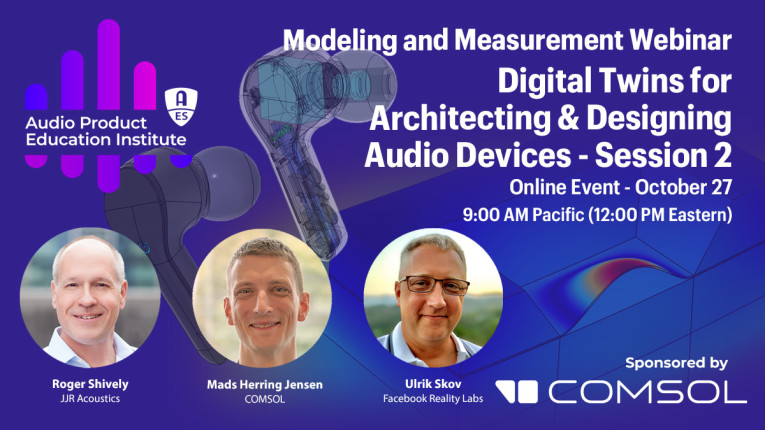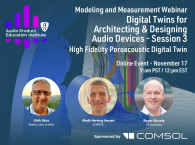
Following a strong first session September 22 to introduce the concept (now available on-demand), the next APEI webinar on this series continues to explore simulation-driven audio architecture design, the role of Digital Twins, and how to influence fundamental design considerations, even before the first prototype is built to proof a concept.
In audio product development, computer modeling and simulations are often used to troubleshoot and optimize acoustic performance once fundamental design assumptions have been defined. And yet, the largest gains in audio performance are consolidated in the very early architectural design phase, where the form factor, transducer choice, and placement dictates the overall acoustic product performance. What if “high fidelity” Digital Twins and advanced experimental transducer identification was used to influence the form factor, transducer type and tuning decisions even before the first prototype is built to proof a concept?
In this webinar, Roger Shively (JJR Acoustics) will present a real case study of Virtual Architectural Design by DigitalTwin, followed by a detailed description of the model and explorations using Comsol. In the detailed example, a true wireless stereo earbud design required a new approach for the microphone implementation.
The identification of the problem, simulation explorations, and the model solution determined will be described. The original design will be then used as a reference for further explorations and simulations of other possible solutions. The case study also shows how finding a good solution inspires manufacturers to explore and do more using the virtual architectural design approach.
Measured data on the microphone for the original design, model calibration, “problem” and error characterization and identification, and presentation of the optimal result planned into the model, will all be discussed. The session will also explore how the digital twin can create a platform for expanding original product designs involving multiple departments and a contracted ODM.
“Similar designs and new design considerations would start from these lessons learned with similar modeling techniques applied during the product concept stage, before a mold for the first prototype was even considered. The investment in simulation was similar to opening a mold, but saves the manufacturer from the cost of prototype iterations and testing cycles,” explains Roger Shively.
October 27
9:00 AM Pacific (12:00 PM Eastern)
Modeling and Measurement
Digital Twins for Architecting & Designing Audio Devices - Session 2
Register Here.
Next Session in this series: November 17
Digital Twins for Architecting & Designing Audio Devices – Session 3
www.audioproducteducationinstitute.org






